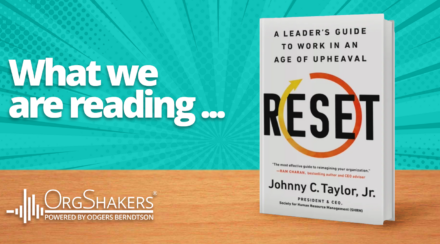Menu

How Can the Public Sector Manage Institutional Brain Drain?
It is no secret that the public sector is struggling to attract and retain talent. Attrition is increasing and workers across the US, UK and beyond are engaging in strikes over better pay and better working conditions. The public sector is taking a huge hit when it comes to talent.
As an HR professional, these can be murky waters to navigate. Our role is integral when it comes to recruiting, onboarding, and embedding the best talent; the turbulence of current affairs can make this noticeably more difficult.
In the midst of this highly visible talent crisis, however, we see some significant underlying challenges that are further hindering public sector employers. One such factor is the significant risk of institutional brain drain.
Institutional brain drain occurs when a large group of employees retire or leave their roles, taking with them huge chunks of knowledge and expertise that have not been successfully captured in an accessible form for other workers. This creates knowledge deficits in these roles as more than 80% of a company’s information exists in individual hard drives and personal files. Pair this with the fact that employees get 50%-75% of their relevant information directly from other people, and it’s easy to see a resource gap in the public sector. The focus on acquiring new talent is important, but if institutions are not successfully capturing and storing the knowledge of their best talent before its gone, they find themselves in a downward spiralling cycle of attrition.
HR professionals working in the public domain can mitigate and manage this drain by integrating attraction strategies, retention strategies, and creation of a knowledge management culture.
Attraction
A great place for employers to start is the factors of decent work[1]. Decent work is work that may not be someone’s life calling and passion, but it will fulfil their basic needs. These five factors include offering access to adequate healthcare, offering adequate compensation, offering the opportunity for work-life balance, having organizational values that align with a person’s personal values, and having a work environment that promotes interpersonal and physical safety. If employers focus on these five factors and create strategies to ensure that most, if not all of these, are being met, they will become a much more attractive place to work.
Retention
As an organization attracts talent, it must immediately dedicate time and energy to retain it. Once the standards for decent work can be provided, focus on creating strategies and policies that reflect the six most common reasons why workers stay in a job. These stay factors are 1) exciting, challenging or meaningful work, 2) supportive management/good boss, 3) being recognized, valued, and respected, 4) learning and development opportunities, 5) flexible working environment, and 6) fair pay[2]. What is worth noting is that when employers are successfully supplying the first five, employees are more likely to feel they are receiving fair pay.
Knowledge Management
Creating a culture of knowledge management is a great way of ensuring that the experiences, knowledge, and skills developed while working for the company are shared amongst new hires. Today’s workers are accustomed to ‘squiggly careers’ (a non-linear career path), and this often results in five- to seven-year tenure rather than the traditional thirty-five year public service career. Building strategies for knowledge management and storage is extremely helpful in light of this trend, as the movement of employees has become much more fluid. Public sector agencies that can adapt to squiggly careers are more likely to succeed today and in the years ahead.
Placing intentional focus on these three approaches simultaneously makes public sector organizations better able to address talent shortages and institutional brain drain.
This is where we can help. With a team of experienced HR consultants specializing in private and public HR strategy, we can assist in building these strategies into your agency, strengthening its foundations for sustainability. If you would like to discuss the services we offer, please get in touch with me at amanda@orgshakers.com
[1] Douglass, R., et al. (2019) The psychology of working and workforce readiness: how to pursue decent work. Workforce readiness and the future of work. Routledge, Taylor and Francis Group, New York.
[2] Ann, K., Hidi, S. (2019) Supporting the development of interest in the workplace. Workforce readiness and the future of work. Routledge, Taylor and Francis Group, New York.



